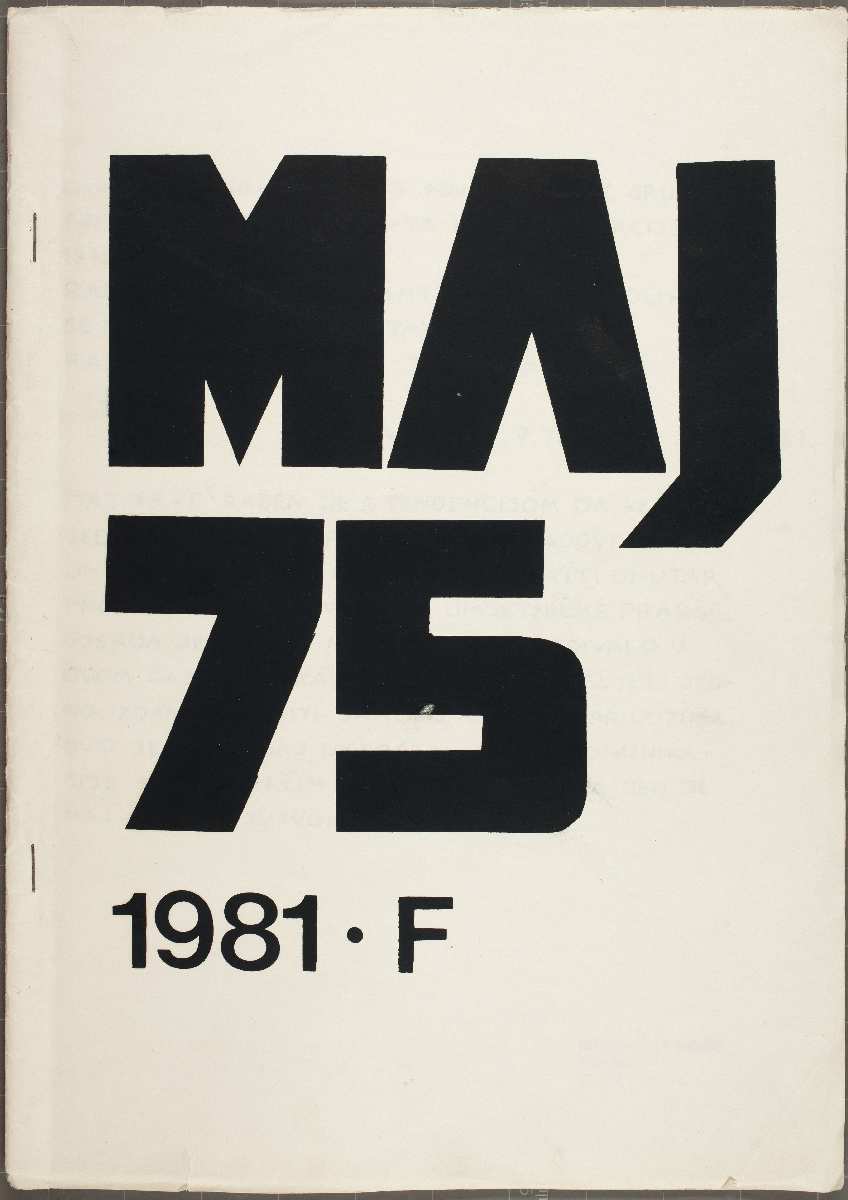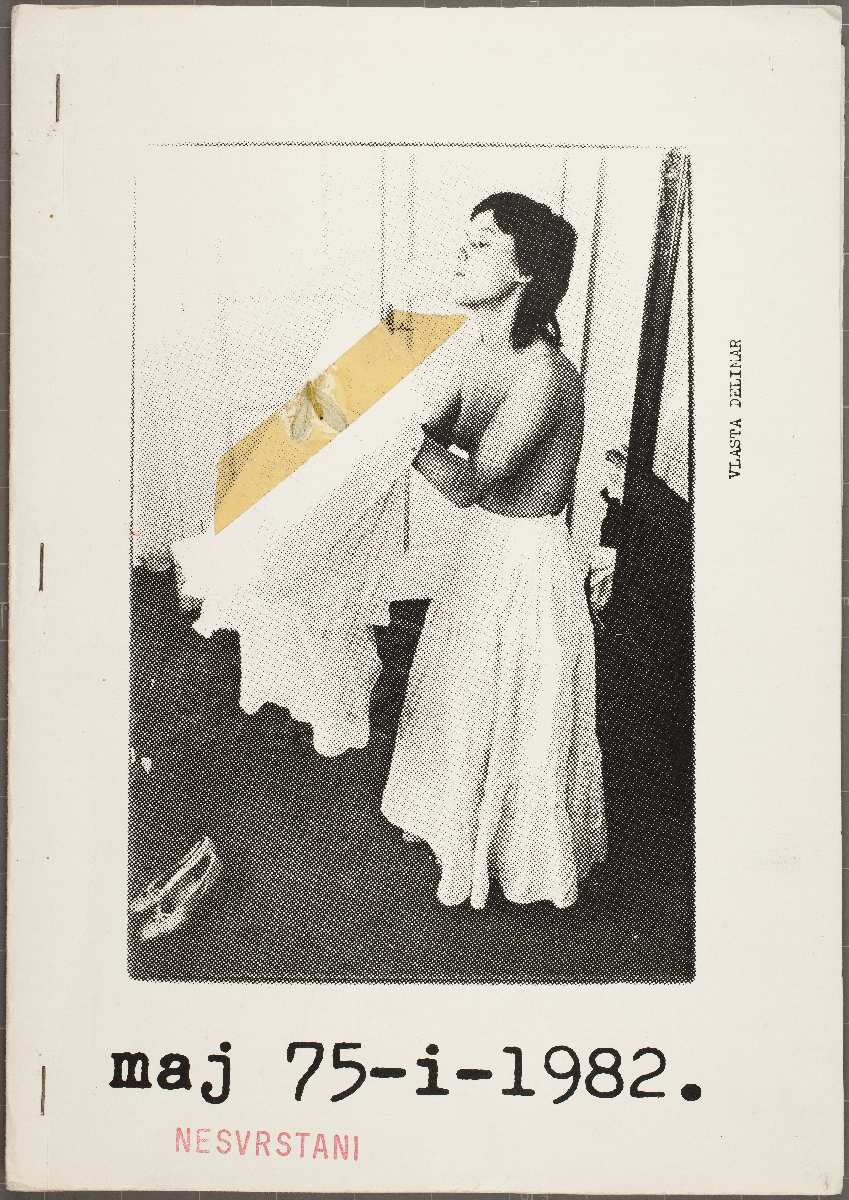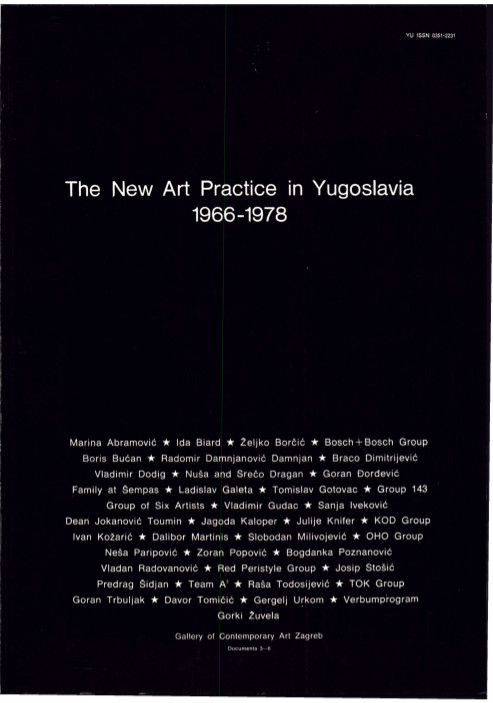Armin Medosch: New Tendencies: Art at the Threshold of the Information Revolution, 1961–1978 (2016)
Filed under book | Tags: · art history, computer art, conceptual art, cybernetics, neo-avant-garde, new art practice, new tendencies, non-aligned movement

“New Tendencies, a non-aligned modernist art movement, emerged in the early 1960s in the former Yugoslavia, a non-aligned country. It represented a new sensibility, rejecting both Abstract Expressionism and socialist realism in an attempt to formulate an art adequate to the age of advanced mass production. In this book, Armin Medosch examines the development of New Tendencies as a major international art movement in the context of social, political, and technological history. Doing so, he traces concurrent paradigm shifts: the change from Fordism (the political economy of mass production and consumption) to the information society, and the change from postwar modernism to dematerialized postmodern art practices.
Medosch explains that New Tendencies, rather than opposing the forces of technology as most artists and intellectuals of the time did, imagined the rapid advance of technology to be a springboard into a future beyond alienation and oppression. Works by New Tendencies cast the viewer as coproducer, abolishing the idea of artist as creative genius and replacing it with the notion of the visual researcher. In 1968 and 1969, the group actively turned to the computer as a medium of visual research, anticipating new media and digital art.
Medosch discusses modernization in then-Yugoslavia and other nations on the periphery; looks in detail at New Tendencies’ five major exhibitions in Zagreb (the capital of Croatia); and considers such topics as the group’s relation to science, the changing relationship of manual and intellectual labor, New Tendencies in the international art market, their engagement with computer art, and the group’s eventual eclipse by other “new art practices” including conceptualism, land art, and arte povera. Numerous illustrations document New Tendencies’ works and exhibitions.”
Based on 2012 dissertation from Goldsmiths, University of London.
Publisher MIT Press, 2016
Leonardo series
ISBN 9780262034166, 0262034166
x+395 pages
Reviews: Oliver Schürer (Versorgerin, 2016, DE), Paula Barreiro López (Critique d’art, 2016, FR), Kristian Lukić (Furtherfield, 2017), Tomáš Glanc (Tech & Culture, 2017), Adair Rounthwaite (Art Bulletin, 2018), Adair Rounthwaite (Art Bulletin, 2018), Ivana Bago (ARTMargins, 2019).
HTML
PDF (added on 2022-10-11)
Maj 75, A–L (1978-84, 1990) [YU]
Filed under artist publishing, catalogue, magazine | Tags: · art, conceptual art, new art practice, yugoslavia


“Maj 75 was an artists’ magazine initiated in 1978 by a group of Zagreb-based artists, the Group of Six Artists (Grupa šestorice autora: painter Boris Demur; photographers Željko Jerman, Sven Stilinović, and Fedor Vučemilović; poet Vlado Martek; and filmmaker Mladen Stilinović), or “a group of friends”, as they refer to themselves in the introductory pages of the magazine. The name of the magazine referred to the date of their first public exhibition. It was conceived as “magazine-catalogue” for their self-organized “exhibition-actions” which ranged from performing and creating installations on city streets and squares to taking trips to the seaside, where they created, performed, and documented work. Comprised solely of pages presenting artworks, the magazine can be viewed as an alternative exhibition space, enabling the artists to communicate their work to the public without the mediation and the sanctioning authority of art institutions and curators. Between 1978 and 1984, 17 issues were published (identified by the letters of the Croatian alphabet), with an additional one produced in 1990 and commemoratively titled Ex-Maj. Issue F, edited by Vlasta Delimar, was a women-only issue.” (Source)
“Exhibition venues were fairly limited for artists so the pages of Maj 75 became an alternative space for not only the Group of Six, but also an extended circle of Yugoslavian and other Eastern European artists, to produce and disseminate their work publicly. Artists such as Vlasta Delimar, Tomislav Gotovac, Sanja Iveković, Mangelos, Balint Szombathy, Raša Todosijević and Goran Trbuljak are a few examples of the many contributors during the history of publication. The magazine was printed in the studio of Vlasta Delimar and Željko Jerman.” (Source)
Published in Zagreb, 1978-84, 1990
via Digitizing Ideas
Commentary: Darko Šimičić (2003), Gwen Allen (2011), MoMA.org (2011), Ivana Bago (c2014).
Comment (0)The New Art Practice in Yugoslavia, 1966-1978 (1978) [English, SerboCroatian]
Filed under catalogue | Tags: · 1960s, 1970s, art, art criticism, art history, conceptual art, neo-avant-garde, new art practice, performance art, yugoslavia

Catalogue for an exhibition on The New Art Practice held in September-October 1978 in Zagreb. The New Art Practice was a term created for a generation of artists in the former Yugoslavia active in the late 1960s and throughout the 1970s. These artists shifted their practice to spaces outside the traditional studio, onto city streets, into artist-run spaces, and in multimedia performances and experimental publications.
With texts by Marijan Susovski, Ješa Dengri, Tomaž Brejc, Davor Matičević, Nena Baljković, Ida Biard, Mirko Radojičić, Bálint Szombathy, Vladan Radovanović, Jasna Tijardović, Slavko Timotijević, Vladimir Kulić, Vladimir Mattioni.
Editor Marijan Susovski
Publisher Gallery of Contemporary Art, Zagreb, 1978
Volumes 3-6 of Documents
80+[61] pages
Exhibition of the artists’ publications of the New Art Practice (MoMA, New York, 2011).
PDF, PDF (English, 9 MB)
PDF, PDF (SerboCroatian, 255 MB)

